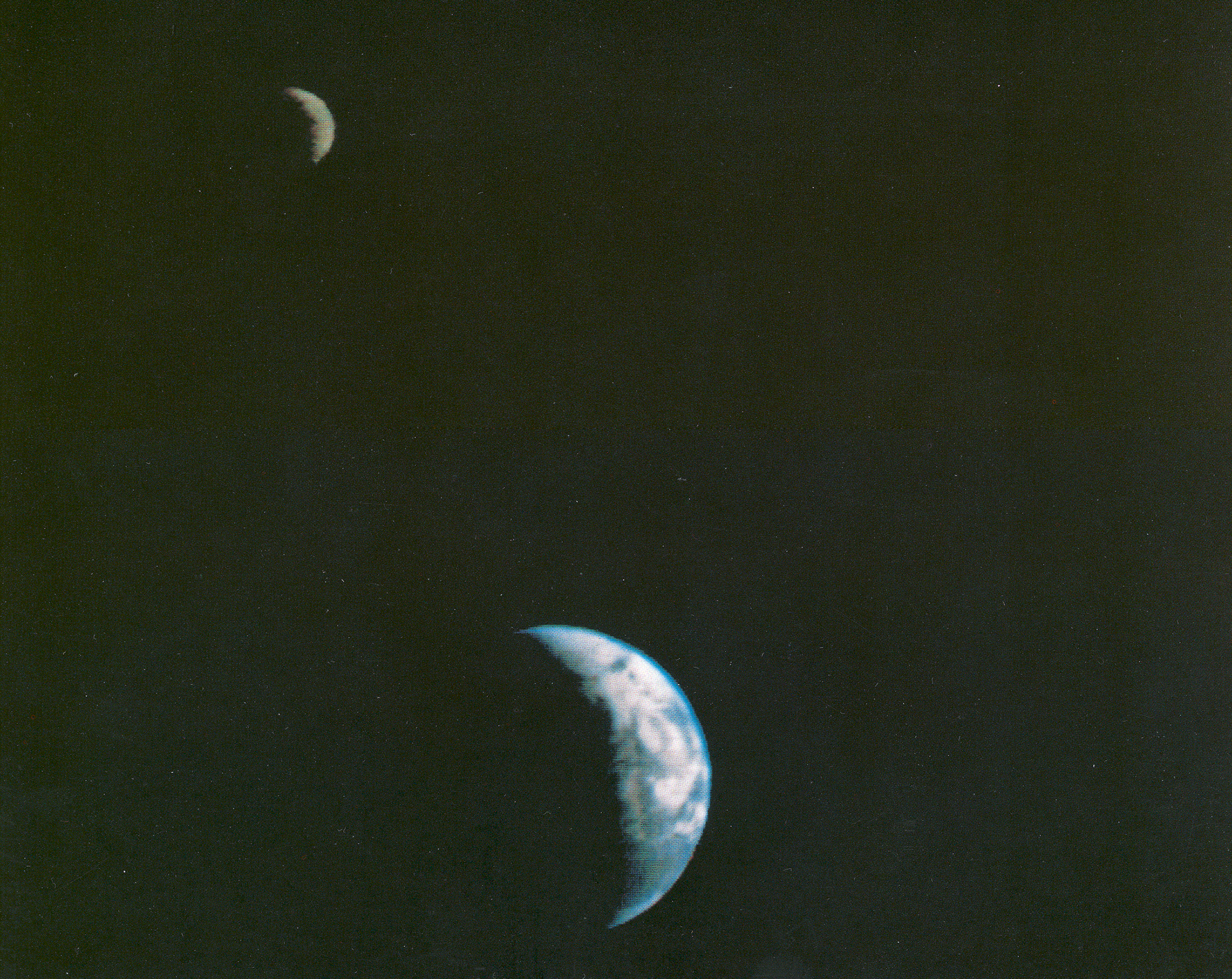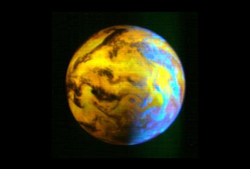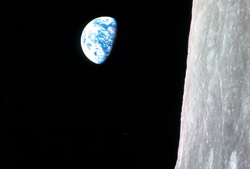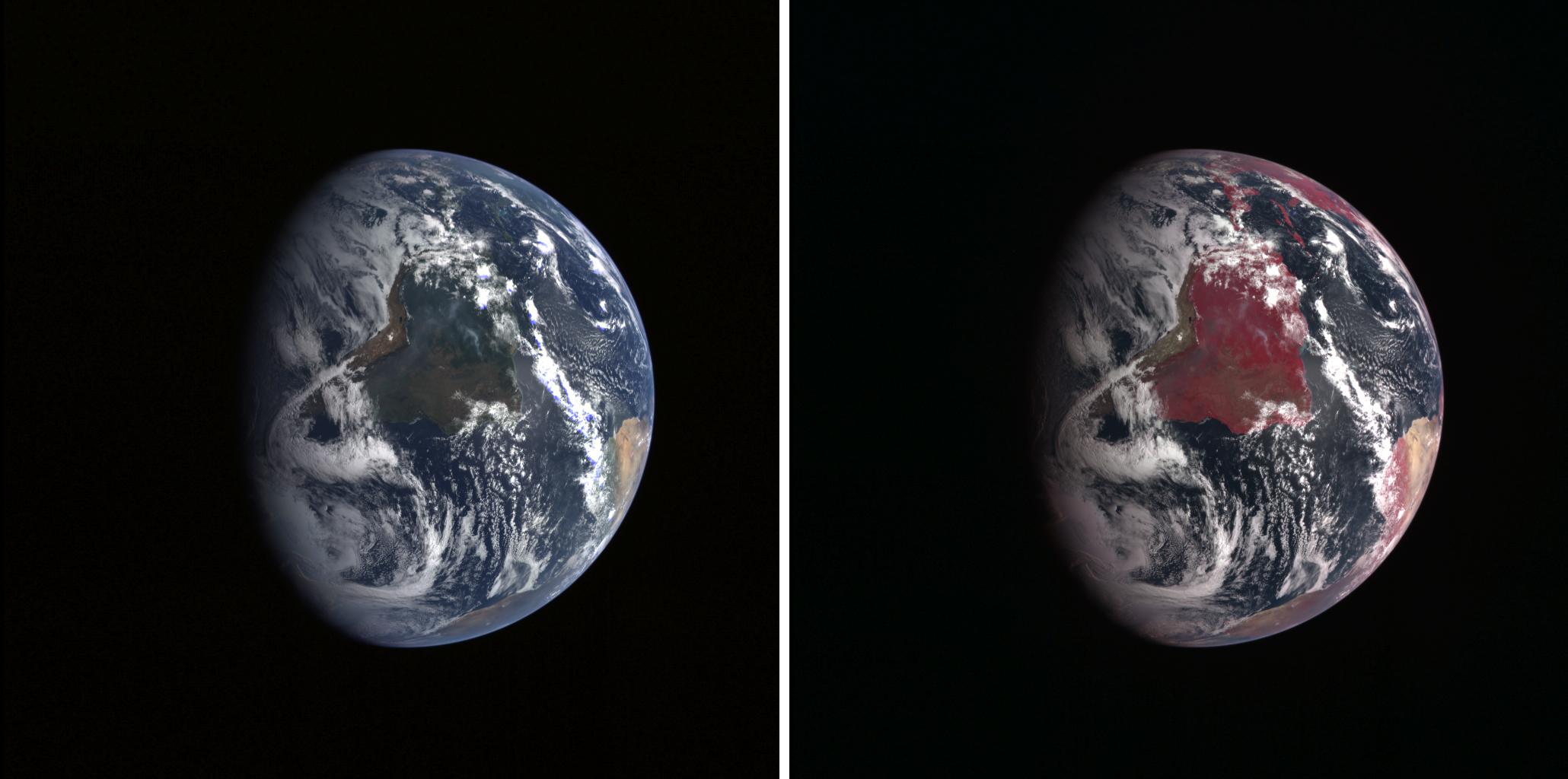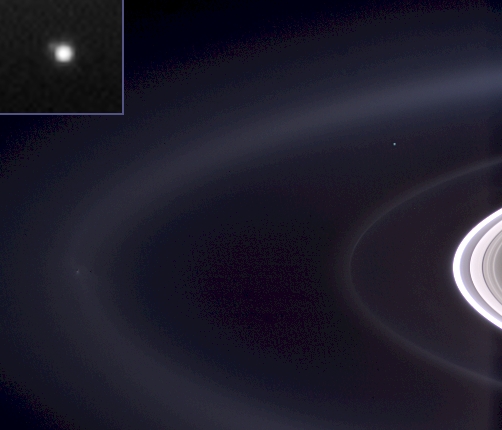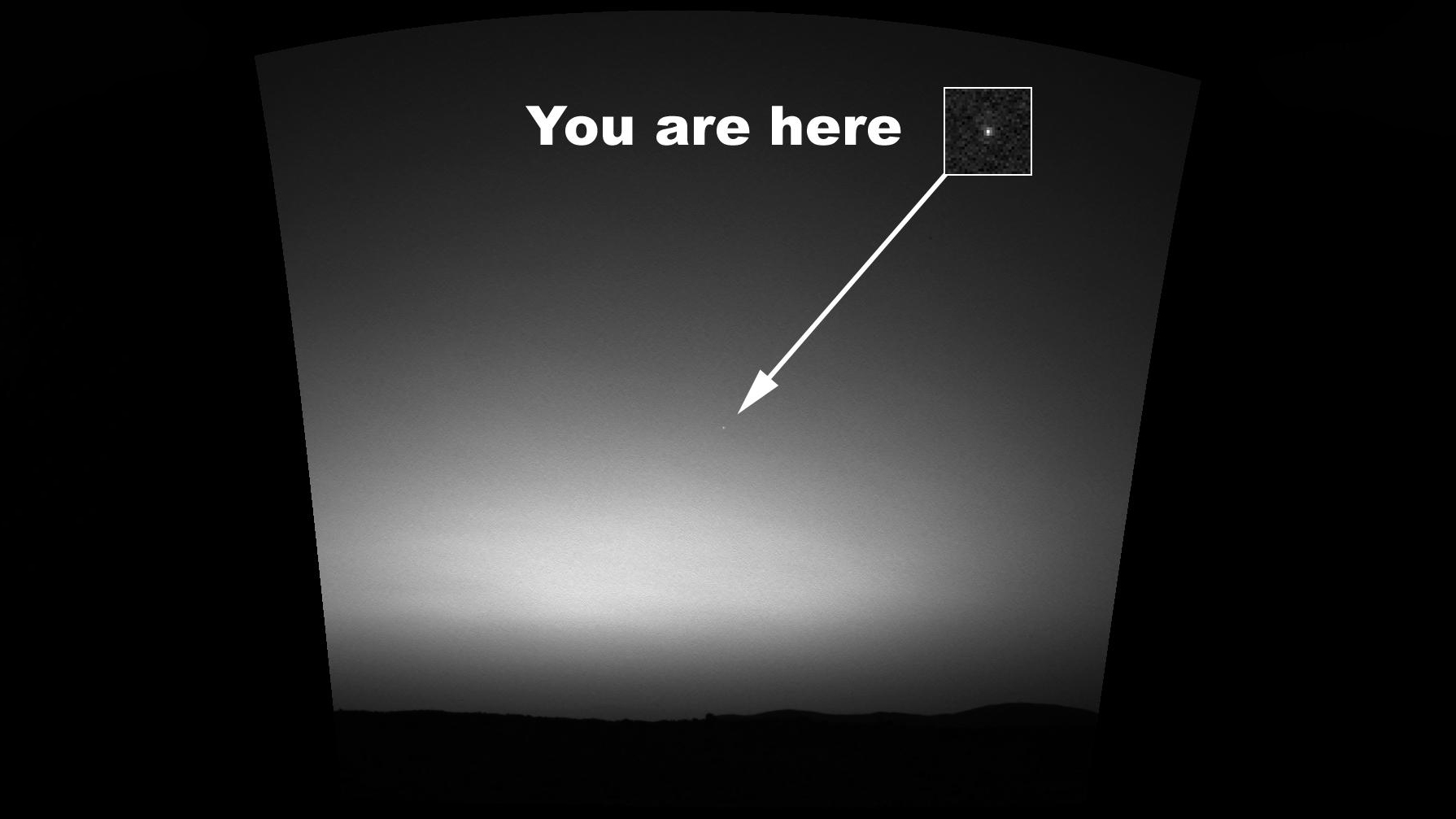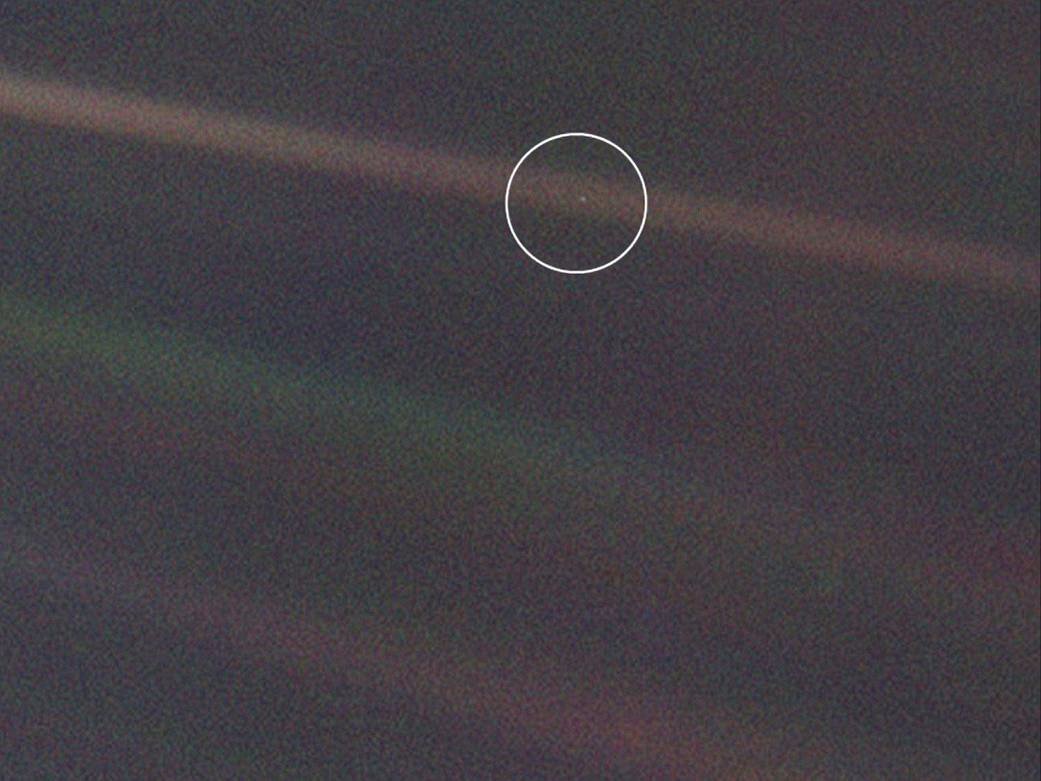The top 10 views of Earth from space
Humans have sent many missions, both crewed and robotic, beyond our planet to explore our neighboring celestial bodies.
Now and then, these intrepid explorers have glanced home to provide us with sometimes stunning and always thought-provoking images. Here are some of the most memorable photos of Earth from space.
Video: Earth views from space and Mars through the years
Related: Amazing astronaut photos of Earth from space
Far from home: Apollo 17
NASA astronaut Harrison Schmitt, Apollo 17 lunar module pilot, is photographed here next to the U.S. flag during NASA's final lunar landing mission in the Apollo series. The photo was taken at the Taurus-Littrow landing site while Schmitt was conducting extravehicular activity.
Related: NASA's Apollo 16 moon landing mission in pictures
Galileo's breathtaking shots
This color image of the Earth was taken by the European Space Agency's Galileo spacecraft on Dec. 11, 1990, as it departed on its three year flight to Jupiter. Antarctica is visible at the bottom of the image, and dawn is rising over the Pacific Ocean.
Earth and moon
This picture of Earth and the moon in a single frame — the first of its kind ever taken by a spacecraft — was recorded Sept. 18, 1977, by NASAs Voyager 1 spacecraft at a distance of 7.25 million miles (11.7 million kilometers) from Earth. Because Earth is many times brighter than the moon, the moon was artificially brightened by a factor of three relative to the Earth by computer enhancement so that both bodies would show clearly in the prints.
Breaking space news, the latest updates on rocket launches, skywatching events and more!
While chasing a comet
The European Space Agency's comet-chasing mission Rosetta took these infrared and visible images during its Earth flyby in early March 2005, while the spacecraft on its way to Comet 67P/Churyumov-Gerasimenko. The images gave the Rosetta team a chance to calibrate its instruments to make sure everything was in working order before its comet encounter.
Related: Europe's Rosetta comet mission in pictures
Earthrise
The iconic image of the Earth rising, the first of its kind taken by an astronaut from lunar orbit, greeted the Apollo 8 astronauts as they rounded the far side of the moon during their insertion burn, on Dec. 24, 1968. The photo is displayed here in its original orientation, though it is more commonly viewed with the lunar surface at the bottom of the photo.
Related: How Apollo 8's 'Earthrise' changed humanity's vision of Earth forever
On the way to Mercury
NASA's MESSENGER mission to Mercury flew by Earth on its way to the innermost planet on Aug. 2, 2005. The gravity-assist flyby not only adjusted the spacecraft's path to Mercury but allowed the spacecraft team to test several of the onboard instruments by taking some shots of its home planet. The camera, designed to characterize minerals that may have formed in Mercury's crust, took this three band composite image on the left using multiple wavelength imaging, giving the continental areas their red color — a result of the high reflectance of vegetation in the near-infrared part of the spectrum.
Related: What a view! Mercury probe snaps stunning photos of our planet during Earth flyby.
En route to Mars
After traveling more than 727,000 miles (1.2 million km) in three days in its journey to the Red Planet, NASA's Mars Reconnaissance Orbiter pointed its cameras toward Earth on Aug. 15, 2005. The orbiter's main objective, to obtain daily global images of Martian meteorology, was postponed to help the Mars Color Imager science team obtain a measurement of the instrument's sensitivity and to check that no contamination occurred to the camera during launch.
Related: Photos from NASA's Mars Reconnaissance Orbiter
From Saturn
NASA's Cassini mission captured this view of Earth from afar using its wide-angle camera on Sept. 15, 2006, while it was orbiting Saturn. At the time, the Cassini spacecraft was 1.3 million miles (2.1 million km) from Saturn and about 930 million miles (1.5 billion km) from Earth. Saturn's moon Enceladus is also captured on the left, swathed in blue and trailing its plume of water ice particles through Saturn's E ring.
Related: Amazing Saturn photos from NASA's Cassini orbiter
A first from Mars
This is the first image ever taken of Earth from the surface of a planet beyond the moon. It was taken by the Mars Exploration Rover Spirit one hour before sunrise on the 63rd Martian day, or sol, of its mission. Because Earth was too faint to be detected in images taken with the panoramic camera's color filters, the inset image shows a combination of four panoramic images zoomed in on Earth.
Related: Wow! Mars probe snaps stunning photo of Earth and moon
The Pale Blue Dot
Part of the first ever "family portrait" of the solar system taken by NASA's Voyager 1 spacecraft in 1990, this image of Earth was captured from a distance of more than 4 billion miles (6 billion km). Pictured here as a dot only 0.12 pixels in size, Carl Sagan described the Earth as "a lonely speck in the great enveloping cosmic dark. To me, it underscores our responsibility to deal more kindly and compassionately with one another and to preserve and cherish this pale blue dot, the only home we've ever known."
Related: NASA's iconic 'Pale Blue Dot' photo of Earth from space just got a 21st-century makeover
Editor's note: This article was originally published Jan. 6, 2008 and updated by Space.com associate editor Hanneke Weitering on April 22, 2020.
- Earth from space: Amazing photos by the GOES-16 satellite
- The secret of NASA's 'Blue Marble' photos of Earth from space
- Black Marble: Nighttime views of Earth from space
Follow us on Twitter @Spacedotcom or Facebook.
OFFER: Save 45% on 'All About Space' 'How it Works' and 'All About History'!
For a limited time, you can take out a digital subscription to any of our best-selling science magazines for just $2.38 per month, or 45% off the standard price for the first three months.

Space.com is the premier source of space exploration, innovation and astronomy news, chronicling (and celebrating) humanity's ongoing expansion across the final frontier. Originally founded in 1999, Space.com is, and always has been, the passion of writers and editors who are space fans and also trained journalists. Our current news team consists of Editor-in-Chief Tariq Malik; Editor Hanneke Weitering, Senior Space Writer Mike Wall; Senior Writer Meghan Bartels; Senior Writer Chelsea Gohd, Senior Writer Tereza Pultarova and Staff Writer Alexander Cox, focusing on e-commerce. Senior Producer Steve Spaleta oversees our space videos, with Diana Whitcroft as our Social Media Editor.


